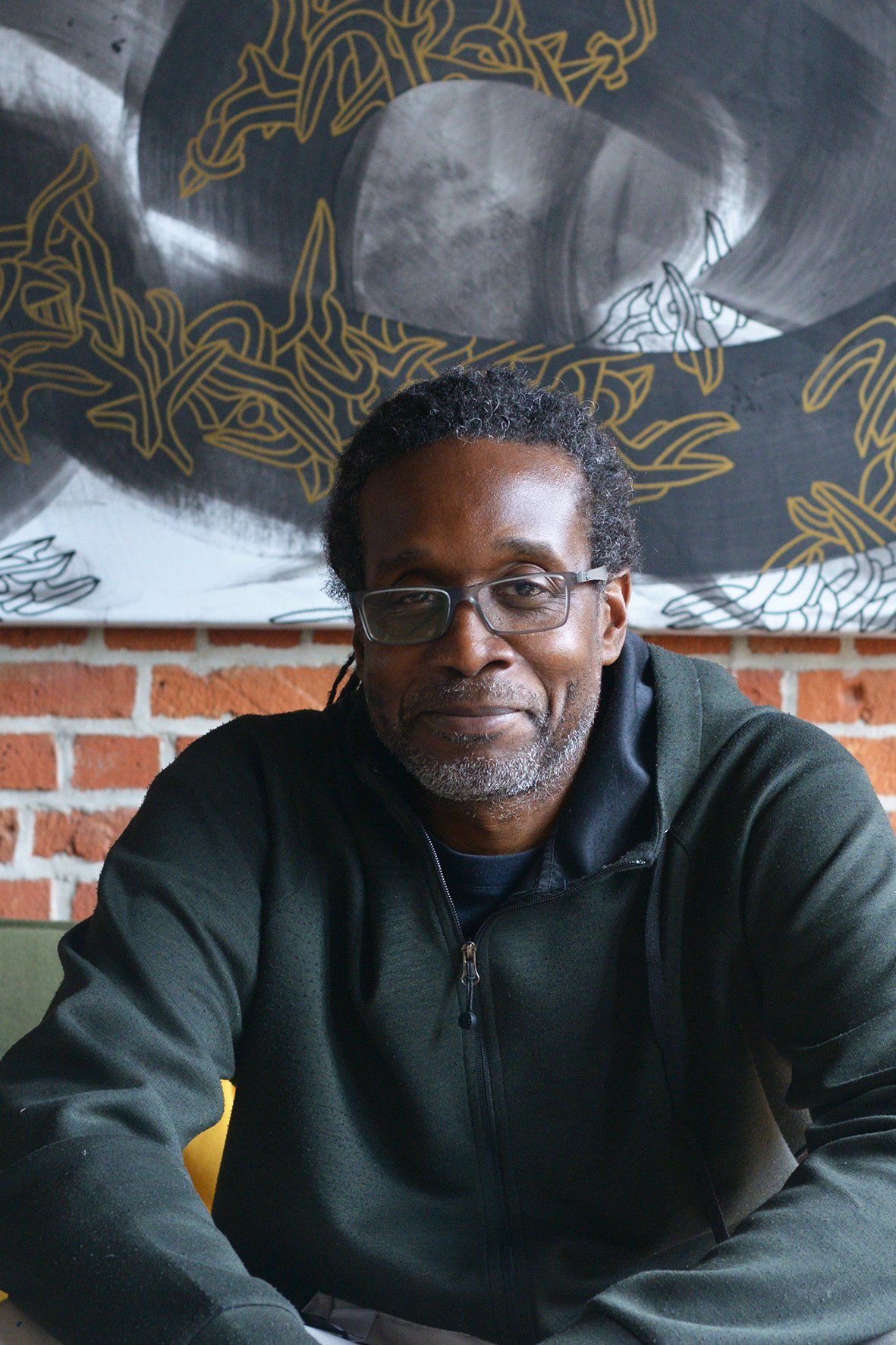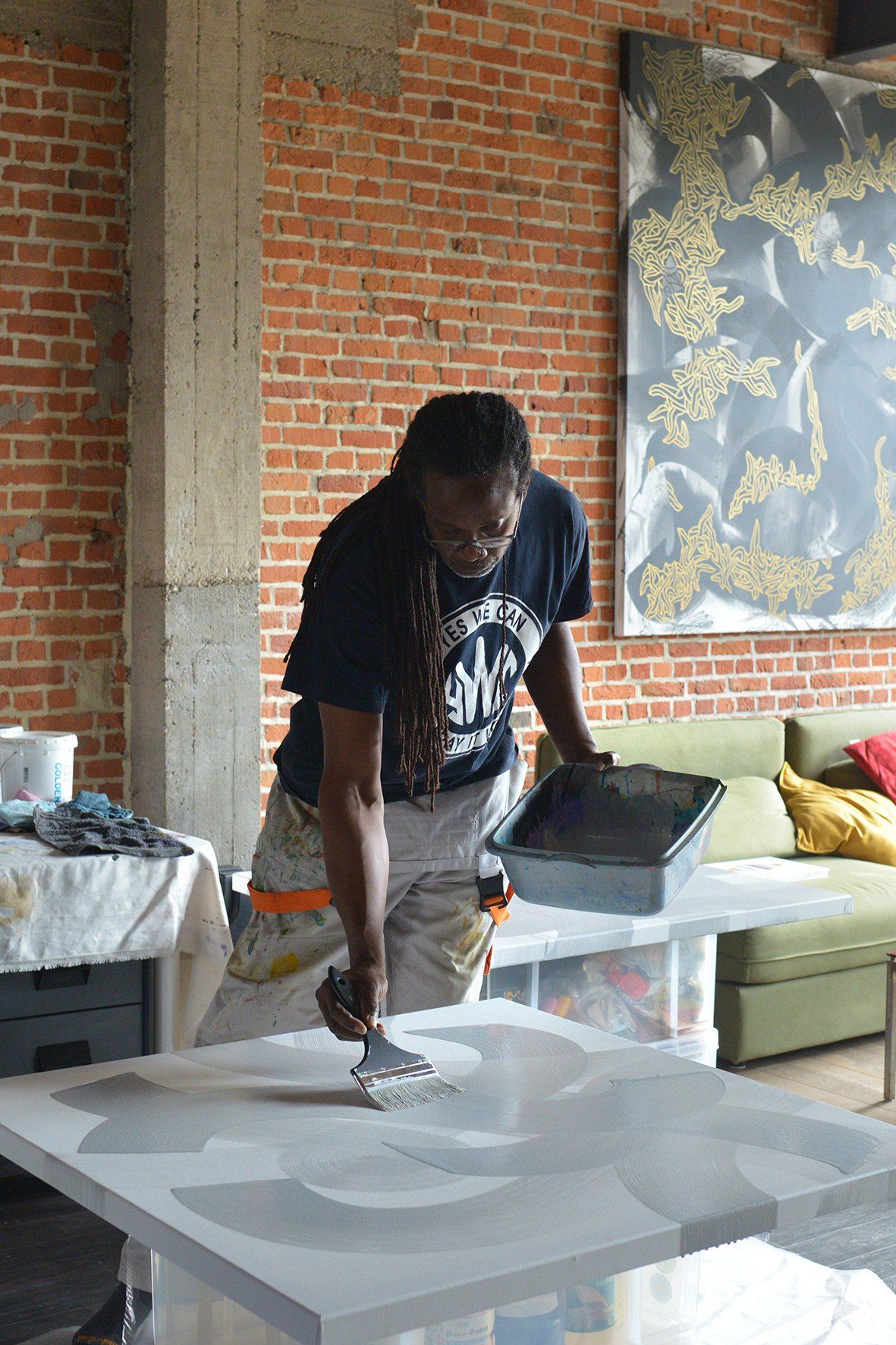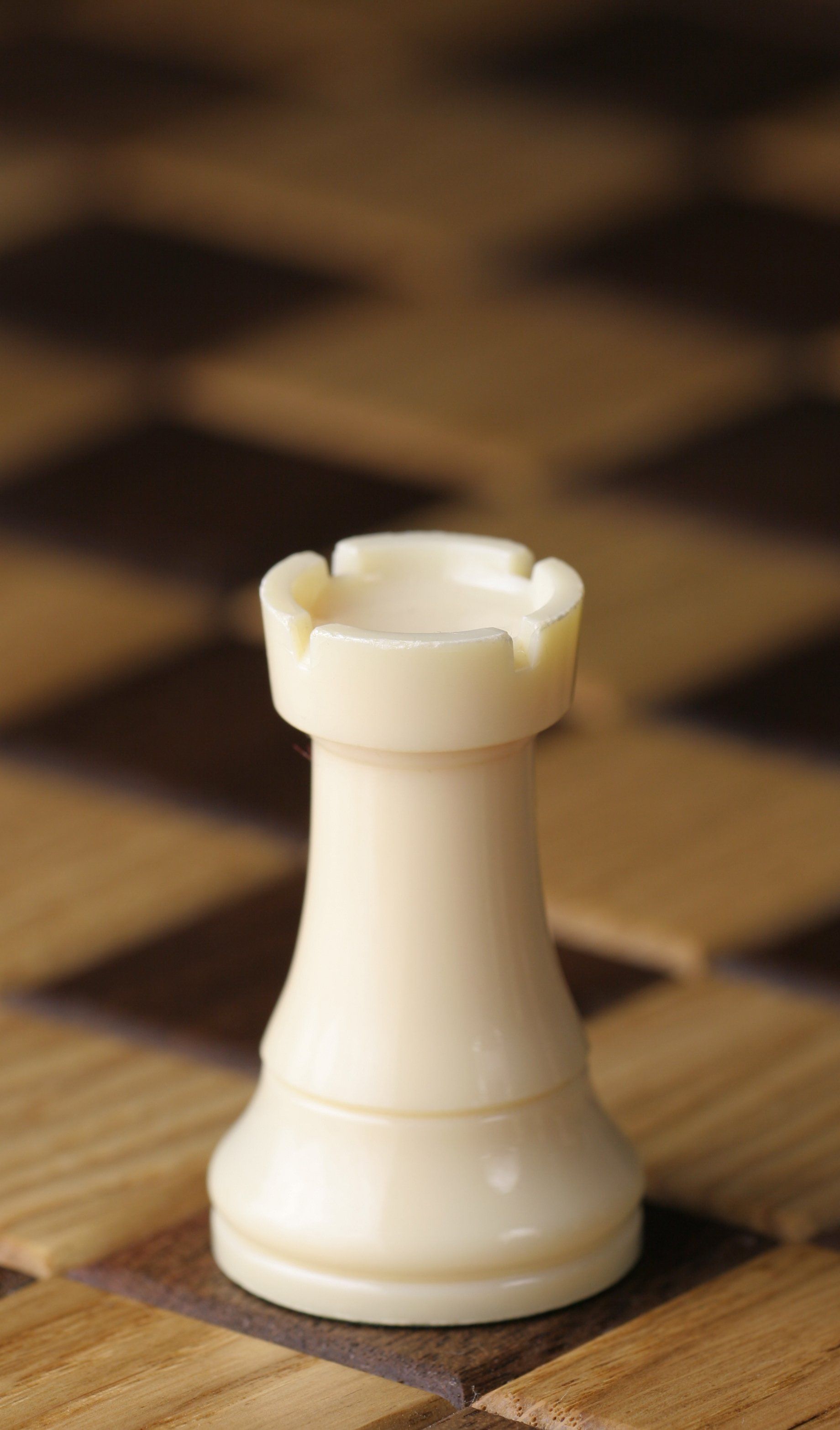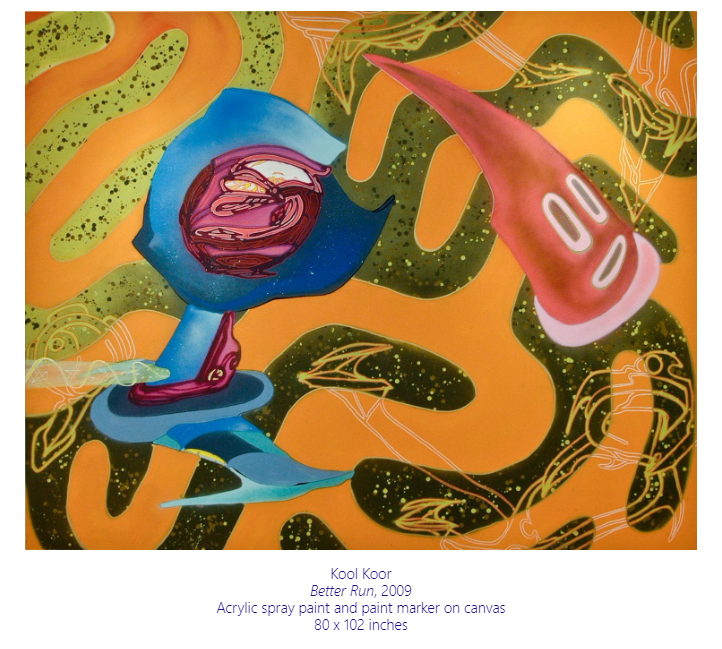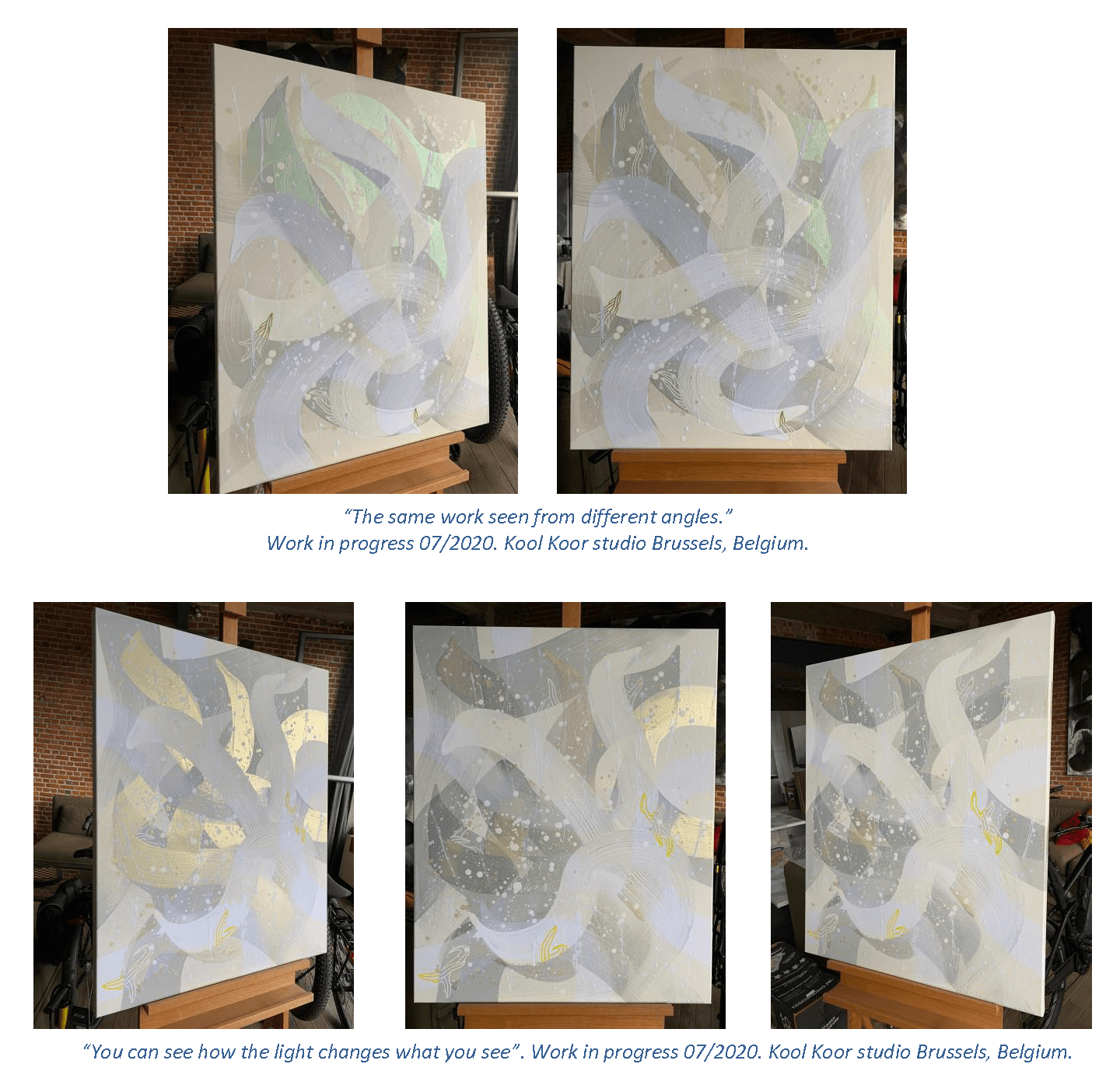Kool Koor: From pioneer graffiti writer to the Metropolitan Museum of Art
Instinctive, passionate, inquisitive, and an unquenchable aficionado of life's details, Kool Koor's artistic journey began in the South Bronx and continues to "constantly reinvent itself."
As a young adult, I was drawn to the game of chess. I like the tower or the rook. I wanted to use "Rook" as an artist's name. I thought the idea would be too corny, so I ditched it. I took the K and the R and turned them around. That's how I got my artist's name. It reflects the way I think. If you look at life or things from the other way around, you often can understand them. That's how Koor came about. There was no one else named Koor, so that was good for me.
My first artist's name was The Arbitrator Koor. I called myself The Arbitrator Koor because I felt that in my artwork, I was an arbitrator. The arbitrator between a reality that we know and a reality that is something else. Kool came about later when I started recording music. I wanted a stage name, and I thought, "Kool Koor," and it stayed Kool Koor.
After that comes the more academic element where you try to put extra balance and emphasis on particular areas to make the artwork work as an artwork.
I don't use gimmicks or figurative elements from everyday life to make people think about something. I can draw a person; I can look at you, and I can illustrate you in a very realistic manner. But if I were to start doing that, I think that I would not be understood as an artist. People would think I was just jumping on a bandwagon, which is not the case.
At the beginning of this year, I did something special: a series of artwork in my old style. That work is being presented by Belinda Neuman, the daughter of my first art dealer. She has a gallery in New York. They exhibited me in the Scope Art Fair, and it was very well received. I think I'm going to open up a small box inside of my universe where I will paint in my old style for their galleries.
DG: Is that a creative decision or financial decision?
KK: It was a creative decision. The gallery exhibited in Miami one year before. They saw a lot of street art spinning around, and they said, "You were there from the beginning. I think that if anything, you should represent that energy. I think that we have people that will be very responsive to it."
It was a year before I accepted. I didn't want to start doing something just for the sake of money. I thought about it, and I thought of myself as a jazz musician, "If you compose something at the age of 20 at the age of 50, you can still play that song. It's still you. Why not for a painter?! "I did it, and It worked.
DG: With these golden labyrinths, what are you looking for, what are you exploring?
KK: Movement! Movement & light.
DG: That's related to the music as well.
KK: Yes, I attribute sound to everything I'm doing. Imagine a two-dimensional representation of something that's three dimensional and that it's in movement. I like the viewer to feel that they're having a snapshot or a still of a movie.
DG: I can understand my eye or me moving through them, but it's more difficult for me to imagine them moving. It's almost like snakes or something.
KK: For me, when I paint, I imagine everything as a small window of a bigger picture.
DG: One of the articles I read says «Graffiti connection », « Graffiti writer », l'artiste aérosol KOOL KOOR, est un des plus intéressants représentants du « Tag » de sa génération. ». it was just this weird mix of things for me. In French “tag” is isn't graffiti.
KK: Tag is writing. In the early days, we didn't call ourselves graffiti artists. We called ourselves Writers. Writing was our language. I always say that writing or tagging is a necessary step in developing your style.
DG: How do you describe your style?
KK: Well, I would say that it is movement. Movement is the one word that encapsulates my work. My work is about searching for, or the expression of movement through time and the interaction of light, trying to find a way to make an artwork that can even ultimately disappear if you look at it from a specific angle.
I've achieved that with certain works I've been doing using black tone-on-tone. I'm working now in a series of white-on-white, tone-on-tone, paintings. Those types of things intrigue me. Because I spent so many years inside of explosions of color, the exploration within black and white is exciting.
DG: Is it calming? I ask because you talked about "explosions and color," "explosions of color," and "explorations of black-on-black and white-on-white."
KK: I'm not sure that it's calming. I didn't' think about it. I'm not doing it for the sake of being calm. I'm doing it because right now, I'm exploring creating nuances with tonality, particularly with white using flat and brilliant paint, and it's fascinating.
I'm looking forward to finishing this first series. It will be exhibited for the first time in Cannes in the south of France. The gallery exhibition opens on July 21, 2020. The second time work from this series will be shown will be in Brussels at the beginning of September. I am going to dedicate the rest of 2020 in Europe to exploring with these tone-on-tone, primarily white canvases.
When I get back to America (whenever that's going to be), I will continue spray painting in my old style but only using various shades of white & gray. The same concept but with spray paint.
DG: You talked about wanting your work to be relevant, and I hate to bring this up, but I can't help but bring it up. You're American. Is your black and white work an expression of what is happening in the United States today? And particularly the exploration that you're doing with the white right now?
KK: Subliminally? Obviously, yes. And I'm not even thinking about it. But obviously, the fact that I am doing this now. Everything happens for a very specific reason. Nothing happens before it's supposed to. Everything happens as it's supposed to happen. There's no such thing as a bad move. Everything is positive for some reason or another.
I've had this idea of doing white artwork for many years, but the moment it didn't present itself. It has now with Coronavirus and this divisiveness that's going on in the States, which is horrific. Here I am bringing out these white paintings I don't get political with my artwork. I've had a few explicitly political exhibitions. I find that you can be political without being political. It's easy to be political; it's easy just to shock to sell art, or to try to seem like you're relevant in the art world. Some figurative artists do that by nature: like Banksy or Shepard Fairey.
My work has always been abstract. For me to get political would seem, again, like someone jumping on the bandwagon. My last political exhibition was Black Gold. It was bringing to light the different commodities being manufactured or pulled out of the ground in very impoverished areas where the people who were sourcing everything were not necessarily benefiting from the product: be it coffee, chocolate, or coal.
I've done exhibitions where I tried to "enlighten" or to "create awareness about higher states of mind" Like Sanctuary, the show I did last year, which I wanted to repeat this year. I wanted to do four exhibitions, all called Sanctuary, but because of the Coronavirus, the exhibitions have been canceled or postponed. I'm still going to do them!
Kool Koor is busy indeed! You can see his work on Facebook and Instagram or live in:
France:
- Paris, Gare du Nord: 2nd level--direction #4 line
- Cannes, Galerie Vieceli, exhibition beginning July 21, 2020.
Belgium:
- Brussels, Louvain-la-Neuve station 6--elevator column leading to platform 1.
- Brussels, Kool Koor, together with Alvari and Mino Ponti, will produce the largest artists' work on vinyl on IT Tower. The work in black, white and gray will be printed on 3M vinyl and applied to the 5000m2 façade of the 120m tall building using heat.
Netherlands:
- Graffiti legend and Rammellzee and Jean-Michel Basquiat cohort, Kool Koor, has been invited together with Soaq One (graffiti artist and member of the HipHop formation Divorze) and Illustrator Shamisa Debroey to paint an enormous (13m x 2m) mural on the exterior of the Speelhuis Theatre in Helmond as part of the city-wide celebration of Lucas Gassel, the reference in landscape painting. The invited artists represent the cities in which Gassel lived during his lifetime (#Helmond--Soaq One, #Antwerp--Shamisa Debroey and #Brussels—Kool Koor). During this performance, the artists will reinvent Gassel's work in an urban context.
DG: When I learned that your work is in the Metropolitan Museum of Art in New York City, I was impressed as hell! Then I thought, "Wait a second, he's a contemporary artist. They don't have contemporary art!"
KK: Apparently, they do! My first gallerist donated the artwork in their collection. So, yes, I have artwork in the Metropolitan Museum, but I'm not very happy about it because they're not letting it live.
Deborah Gallin is the Founder of Art Works Internationally: Unleash the Unexpected.
Autres articles...






